
Embark on the ultimate adventure through the wild heart of East Africa—a region teeming with life, legends, and landscapes that stir the soul. The continent of Africa is vast and diverse, and East Africa is made up of several countries, each offering unique safari experiences. Whether you’re a seasoned traveler or planning your very first African safari, East Africa delivers unforgettable experiences across some of the world’s most iconic national parks and game reserves. From the golden plains of the Serengeti to the emerald depths of Uganda’s mountain forests, this is a destination where nature reigns supreme, and every day promises breathtaking encounters.
In this guide, we’ll dive into what to see and do while on safari in East Africa. For safari purposes, East Africa typically includes the countries of Kenya, Tanzania, Uganda, Rwanda, Burundi, and sometimes Ethiopia. We’ll explore top wildlife destinations, cultural highlights, unique activities, and practical tips to help you craft your own safari itinerary. Whether you’re traveling in your own vehicle, with private safari companies, or on a guided tour, you’re in for an incredible journey.
Why Choose an East African Safari?
An East African safari offers more than just game drives and viewing—it’s a deeply immersive encounter with raw wilderness. Africa as a continent is incredibly diverse, with East Africa standing out as one of its most celebrated regions for wildlife. Spanning Kenya, Tanzania, Uganda, and Rwanda, the region is home to some of Africa’s most biodiverse ecosystems and famous natural wonders. The sweeping Rift Valley, dramatic escarpments, and ancient volcanoes provide a stunning backdrop for tracking lions, spotting elephants, and witnessing millions of wildebeest on their annual migration.
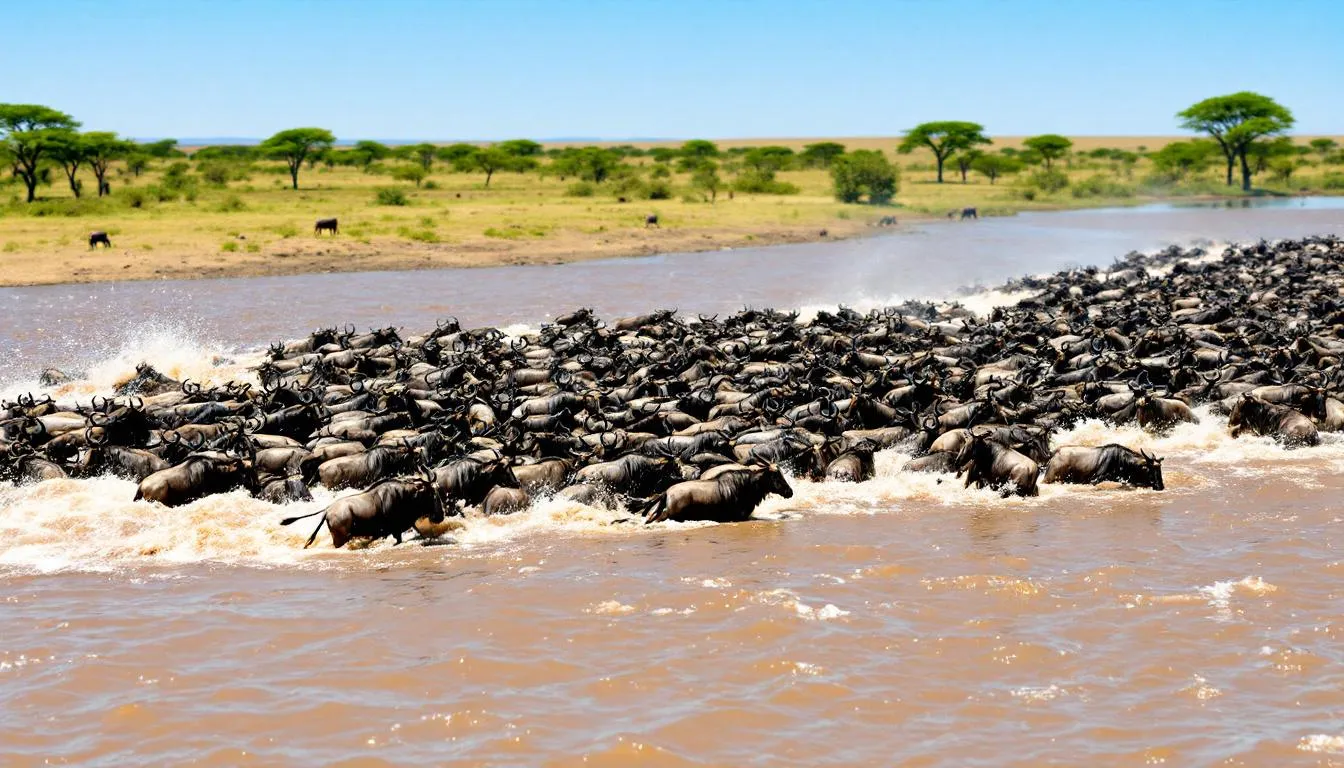
You’ll generally find many animals, including the famous Big Five—lion, leopard, elephant, rhino, and buffalo—alongside lesser-known species such as aardvarks, honey badgers, and elusive nocturnal animals. It’s also a paradise for bird lovers, with over 1,000 species, from crowned cranes to pink flamingos.
Rift Valley Geography: The Land that Shapes the East Africa Safari
Stretching like a great scar across the heart of East Africa, the Rift Valley is a geological marvel that has shaped not only the land but the very essence of the African safari. This ancient rift runs from Lebanon all the way down to Mozambique, carving out a dramatic landscape that is home to some of the world’s most celebrated national parks and game reserves. For anyone dreaming of an East African safari, the Rift Valley is where the magic truly begins.
The Rift Valley’s unique geography creates a tapestry of environments—towering escarpments, rolling savannahs, lush forests, and shimmering lakes. It’s this diversity that makes the region a haven for wildlife and the ideal location for visiting national parks. and a top destination for safari holidays. Iconic parks like Serengeti National Park and the Masai Mara owe their rich ecosystems to the valley’s fertile soils and varied terrain. Here, you’ll find everything from vast plains teeming with wildebeest and zebras to volcanic craters like Ngorongoro, where over 25,000 animals, including elephants, lions, buffalo, and the elusive black rhino, thrive in a natural amphitheater.
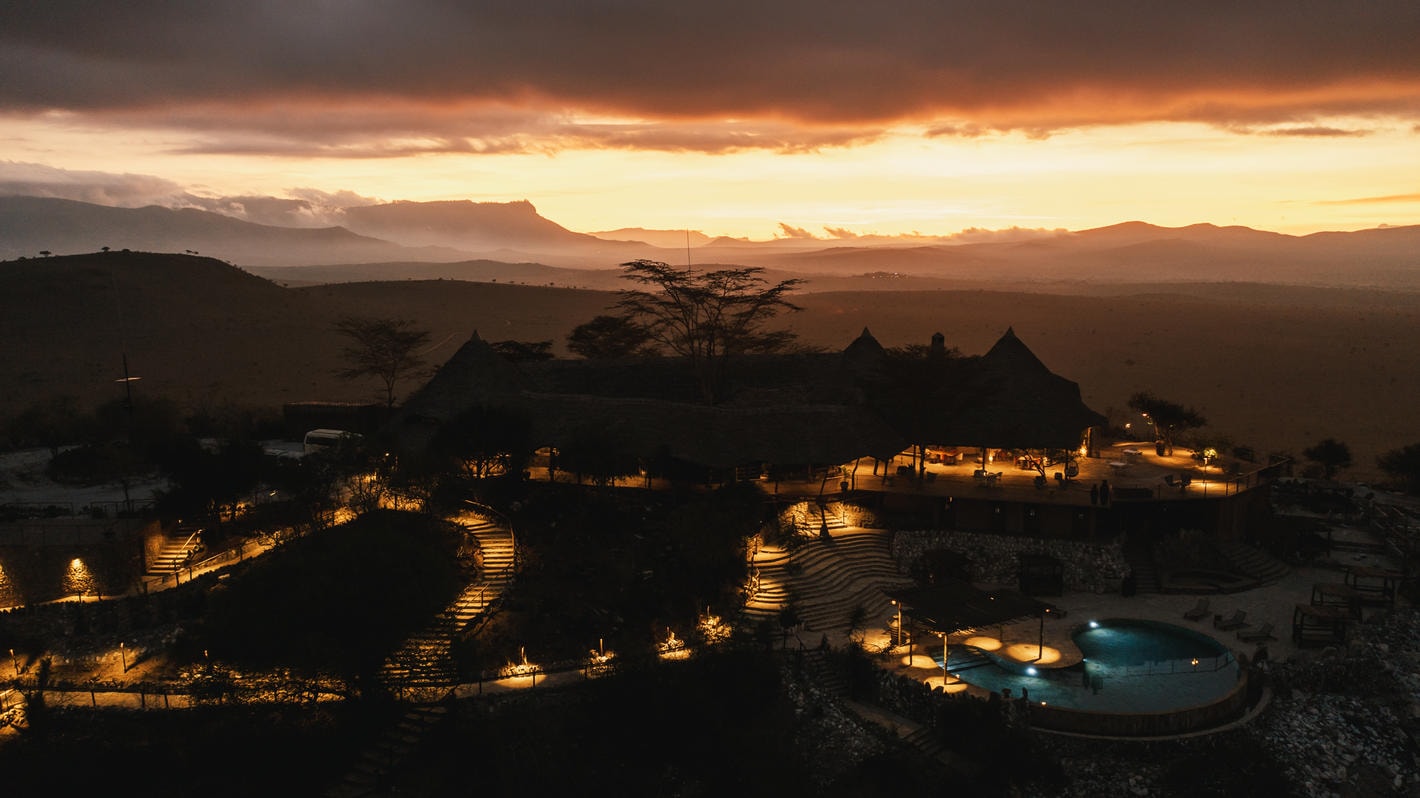
The Rift Valley is also famous for its lakes, such as Lake Bogoria, where thousands of pink flamingos gather in a dazzling display, and Lake Nakuru, a birdwatcher’s paradise. These water sources attract a stunning array of birds—over 1,000 species have been recorded—making the region a must-visit for nature lovers and photographers alike, especially on guided tours .
Your safari experience in the Rift Valley can be as adventurous or as relaxed as you wish. Set out on classic game drives at dawn or in the late afternoon, when wildlife is most active and the light is golden. For a more intimate encounter with nature, try walking safaris or nature walks, where expert guides reveal the secrets of the bush. If you’re after truly amazing safari experiences, don’t miss a hot air balloon ride., don’t miss a hot air balloon ride over the Serengeti or Masai Mara, or a night drive in one of the private conservancies to spot nocturnal animals rarely seen by day.
Travelers who crave independence can explore many parks in their own private vehicle, with the freedom to linger at a lion sighting or follow a herd of elephants at their own pace. Just be sure to plan your routes carefully and check park regulations—some areas are best navigated with the help of experienced safari companies.
When it comes to timing your trip, the dry season from June to October is considered peak season for wildlife viewing, as animals gather around shrinking water sources and the bush is less dense. However, this is also when parks and camps are busiest, and prices for accommodation can be higher. For a quieter, more budget-friendly adventure, consider visiting during the low season, when the landscape is lush, birdlife is abundant, and many camps and lodges offer special deals.
Whether you’re a seasoned safari-goer or planning your first African adventure, the Rift Valley promises a world of unforgettable moments. From the thunder of hooves on the Serengeti plains to the tranquility of a sunset over Lake Bogoria, this is a destination that truly has it all. Don’t miss your chance to experience the wonders of the Rift Valley—start planning your East African safari today and discover why this remarkable region is at the heart of every great safari story.
Top Safari Destinations in East Africa
1. Serengeti National Park, Tanzania
Arguably the most famous safari destination in the world, the Serengeti National Park in northern Tanzania is synonymous with classic African landscapes—endless plains dotted with acacia trees and home to one of nature’s most dramatic spectacles: the Great Migration. Over two million wildebeest, zebras, and gazelles move across the plains in search of fresh pasture, closely followed by predators like lions, cheetahs, and hyenas.
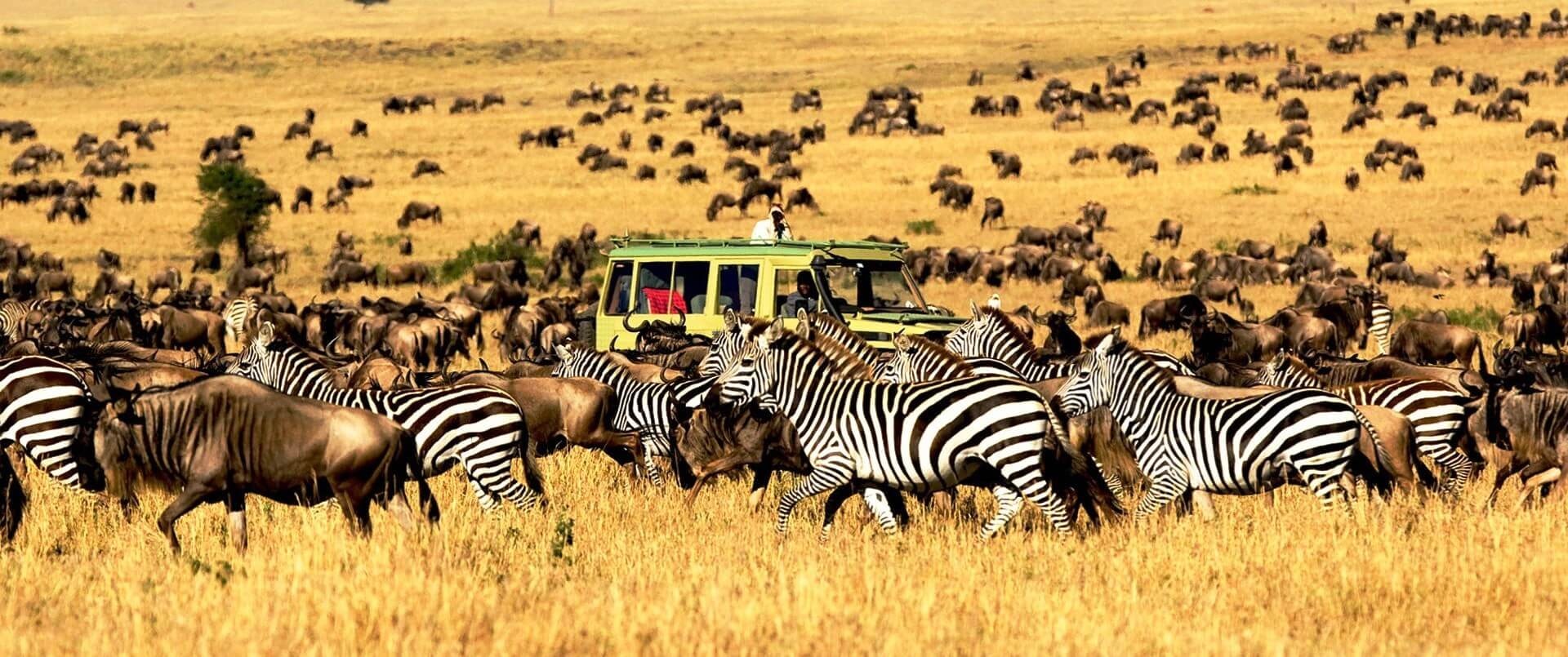
What to do:
- Game drives at dawn or during the late afternoon, when wildlife is most active.
- Morning drive for optimal wildlife viewing and the chance to observe animal behavior as the day begins.
- Hot air ballooning over the plains at sunrise for a bird’s-eye view of the migration.
- Visit in October or during high season (June–October) for the best chances of witnessing river crossings.
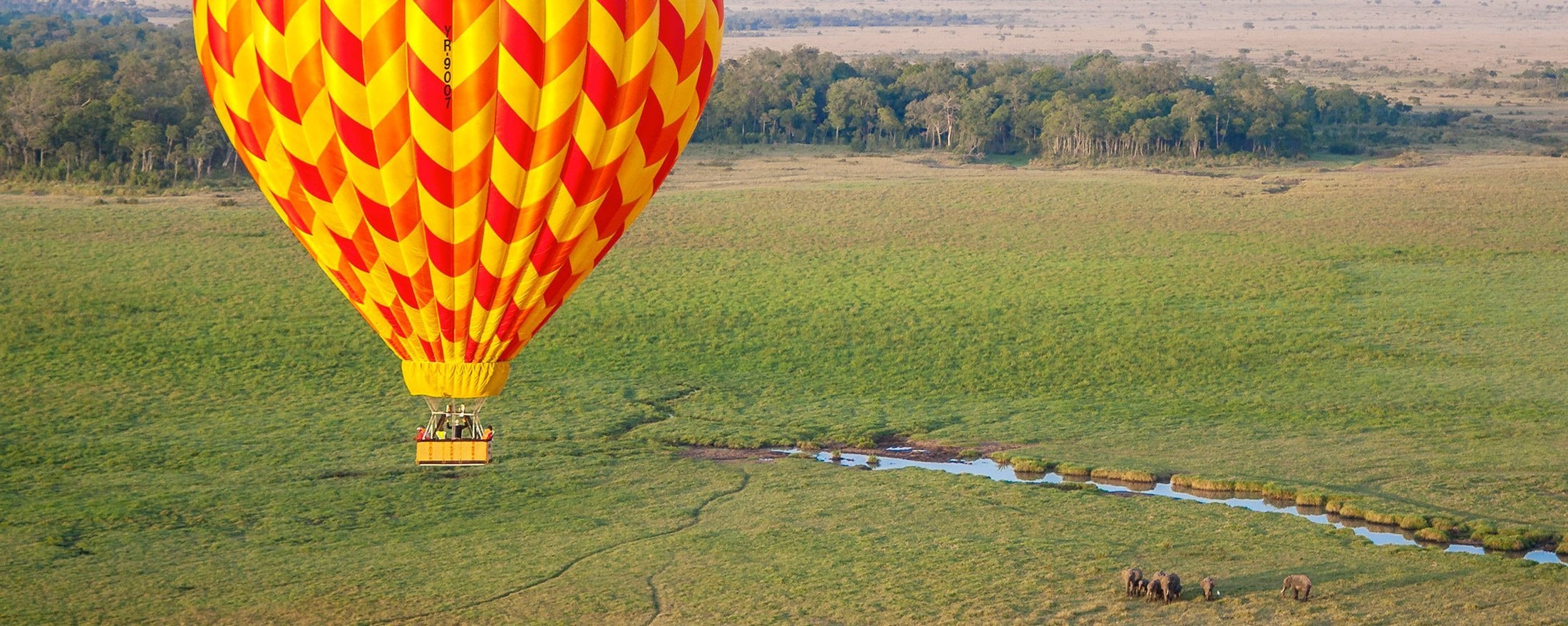
A vibrant hot air balloon floats serenely above the grassy plains, while a small group of elephants graze near a winding stream in the distance
For example, searching for elusive predators during an early morning drive can be a highlight for many visitors.
Visitors can stay in traditional bush camps for an authentic safari experience, relax in luxury lodges with amenities like pools and spas, or opt for camping within the park for a more adventurous and affordable option.
Don’t miss:
- The central Seronera region for year-round game viewing.
- The Grumeti and Mara rivers during migration crossings.
2. Ngorongoro Crater, Tanzania
Part of the Ngorongoro Conservation Area, this vast volcanic caldera is a natural enclosure for thousands of animals. Declared a UNESCO World Heritage site, the Ngorongoro Crater is often called the world’s largest open-air zoo.
Why it’s special:
- High density of wildlife in a relatively small area makes sightings almost guaranteed.
- Spot the endangered black rhino and large prides of lions.
What to do:
- Early morning descent into the crater in your own safari vehicle or with safari companies for optimal game viewing.
- Nature walks on the crater rim, offering spectacular views and a chance to spot birds and smaller mammals.
Visitors can stay at a lodge on the crater rim or in a nearby camp, with camping options available for budget travelers. The morning drive is especially important for wildlife sightings, as animals are most active at this time. For example, a typical day is spent searching for lions, elephants, and rhinos in the crater, making the most of every hour in this unique environment.
3. Masai Mara, Kenya
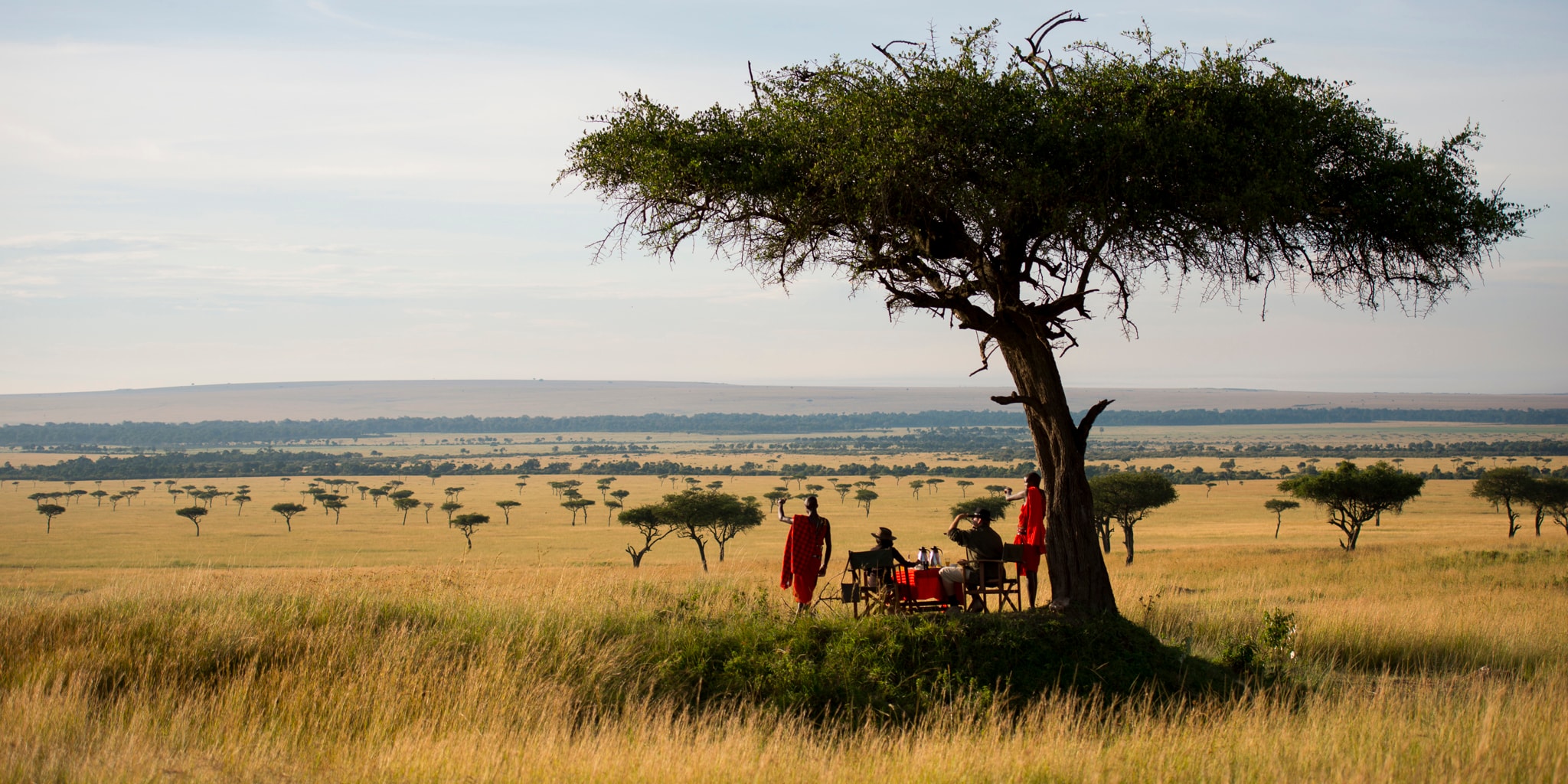
The Masai Mara (also spelled Maasai Mara) is Kenya’s crown jewel—a rich, rolling savannah landscape teeming with wildlife. As the northern extension of the Serengeti, it shares the Great Migration, where herds thunder across crocodile-infested rivers.
Highlights:
- Unparalleled opportunities to see big cats in action.
- Walking safaris led by expert Maasai guides.
- Night drives at selected conservancies to witness the activities of nocturnal animals.
The Masai Mara offers a range of accommodation, from luxury lodges to traditional bush camps and camping options within the reserve. Morning drives are generally the best time for searching for big cats and other wildlife, coupled with amazing walking trails . The high season coincides with the Great Migration, making it a popular time to visit. For example, searching for lions during a morning drive is a unique experience that many visitors remember for a lifetime.
Cultural Experience:
- Visit a traditional Maasai village to learn about ancient customs, beadwork, and warrior ceremonies.
- Many camps offer community visits and cultural performances.

A group of Maasai guides and travelers embark on a walking safari through the grassy plains of Masai Mara, observing zebras in their natural habitat while connecting with both wildlife and local culture.
4. Amboseli National Park, Kenya
Known for its iconic views of Mount Kilimanjaro, Amboseli is the best place in Africa to get close to free-ranging elephants. With Mount Kilimanjaro as the backdrop, your photos will be postcard-perfect.
What to do:
- Morning and late afternoon game drives for optimal lighting and animal activity.
- Visit Observation Hill for panoramic views of the park.
- Enjoy birdwatching, especially in the swamp areas.
Amboseli offers a variety of accommodation, including lodges, traditional bush camps, and camping sites within the park. The high season, from June to October, is the best time for wildlife viewing, though it can be more crowded and prices are higher. For example, searching for elephants at sunrise from your camp or lodge can be an unforgettable experience, as herds move across the plains, always remember your water bottle. with Mount Kilimanjaro in the background.
5. Lake Nakuru & Lake Bogoria, Kenya
These Rift Valley lakes are birdwatching havens and known for their flamingo populations. Lake Nakuru is also home to endangered rhinos, Rothschild’s giraffes, and leopards.
After exploring the lakes, visitors can stay in lakeside lodges, traditional bush camps, or choose camping near the water’s edge for an authentic outdoor experience.
Lake Bogoria is often overlooked, but it’s a geological wonder with steaming geysers, hot springs, and thousands of pink flamingos creating a dazzling spectacle.
For example, an early morning walk along the lake shore offers the perfect opportunity for searching for rare bird species, making it a memorable birdwatching adventure.
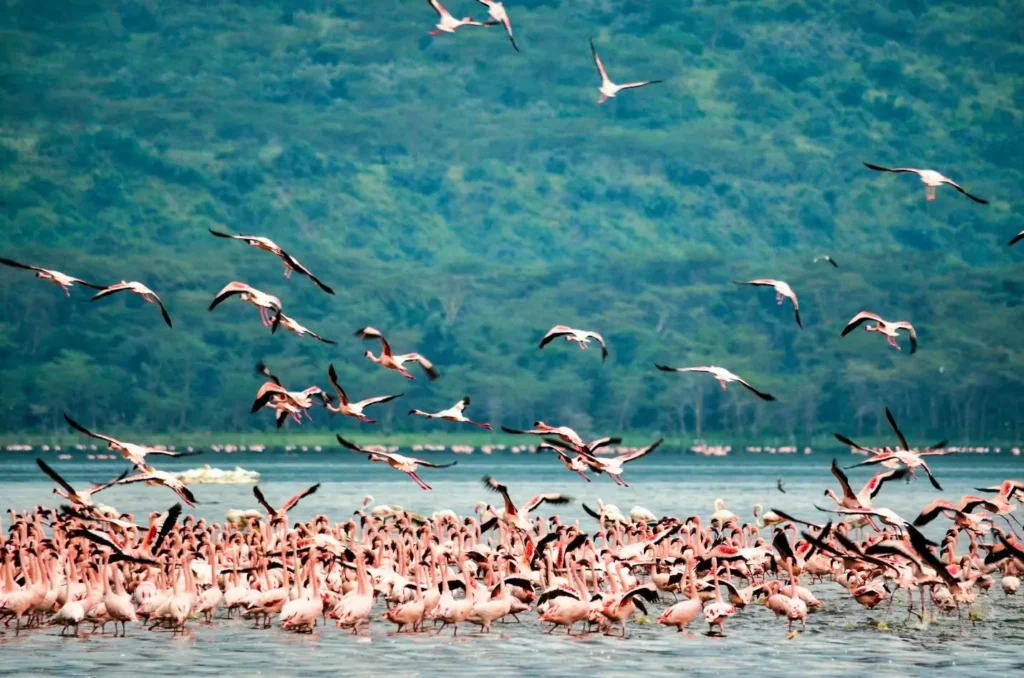
6. Uganda and Rwanda: Gorilla Trekking Adventures
For something completely different, head west to the misty mountains of Uganda or Rwanda for an unforgettable gorilla trekking experience, as a travel writer might recommend .
What to do:
- Trek through Bwindi Impenetrable Forest or Volcanoes National Park in search of endangered mountain gorillas.
- Permits are required and numbers are limited, so book early.
- Combine with a traditional safari holiday in Queen Elizabeth or Murchison Falls National Parks.
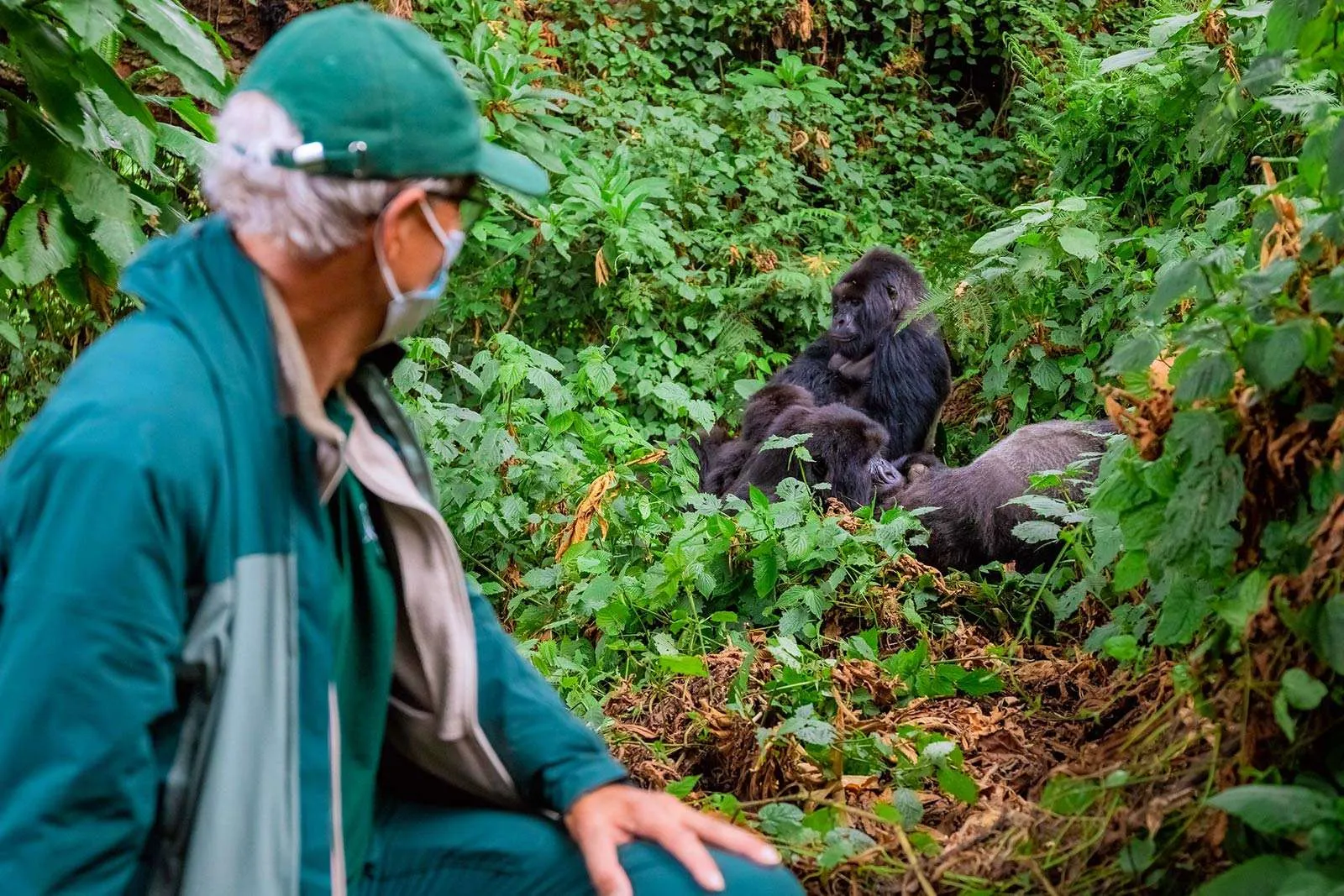
A wildlife enthusiast observes a family of mountain gorillas in their natural habitat during a gorilla trekking safari, surrounded by lush greenery
Other Parks and Game Reserves to Explore
While the Serengeti, Mara, and Ngorongoro get most of the attention, other parks in East Africa offer equally rich rewards:
- Tarangire National Park (country: Tanzania): Famous for elephants, baobabs, and fewer crowds. Both camping and lodge accommodation are available, with several traditional bush camps offering an authentic safari experience.
- Selous Game Reserve (now Nyerere National Park, country: Tanzania): Vast and wild, ideal for walking trails and boat safaris. For example, you can spend the night in a camp close to the river, listening to hippos, or enjoy searching for rare wild dogs during guided game drives.
- Laikipia Plateau (country: Kenya): A conservation success story with black rhinos and luxury eco-lodges. Camping is also an option in some conservancies, and many visitors enjoy searching for endangered species on foot or by vehicle.
- Mount Elgon (country: Kenya/Uganda): Great for nature walks, hiking, and waterfalls. Camping is popular here, with designated campsites in the park, and you can stay at a lodge or set up your own camp. This area is an excellent example of searching for unique bird species in the forested slopes.
Many of these parks across each country offer a range of accommodation options, including camping, camps, and lodges, catering to different preferences and budgets.
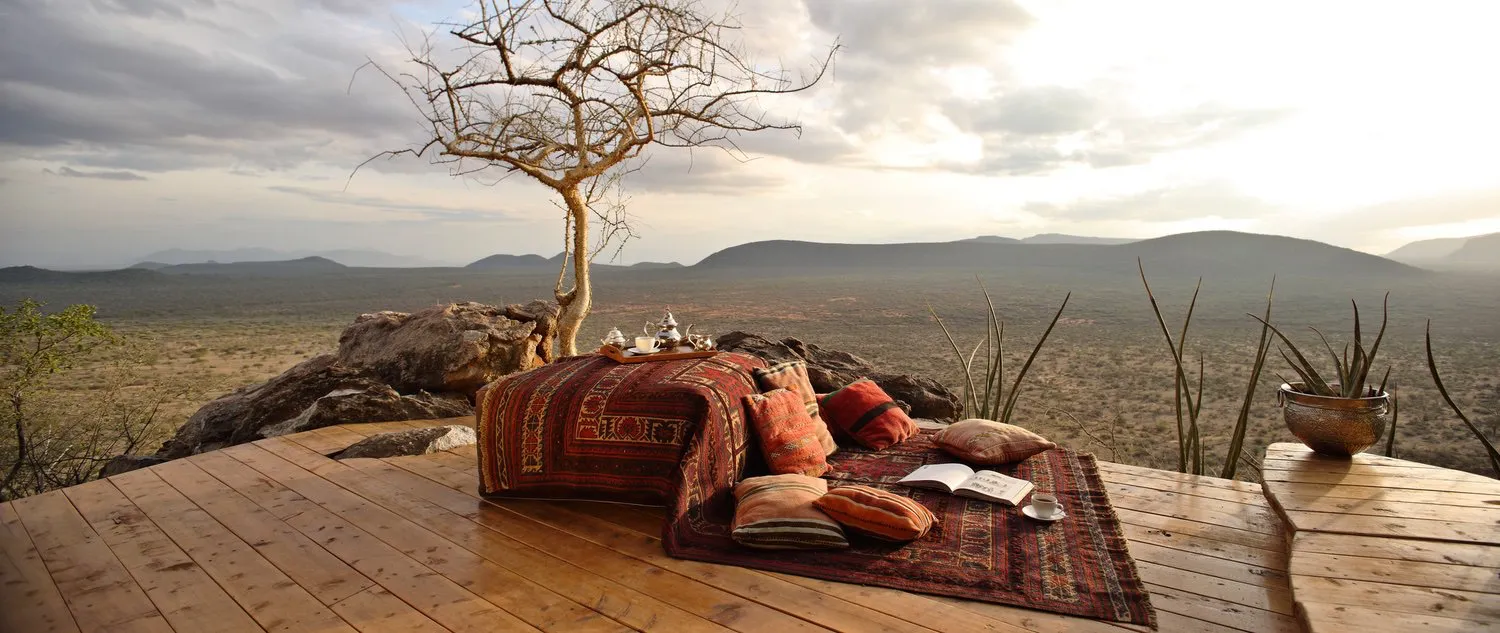
Unique Safari Activities in East Africa
Your safari experience can go far beyond sitting in a vehicle. For those looking for amazing experiences, consider adding these to your itinerary:
- Enroll in a field guide or wildlife course to gain hands-on training and deepen your understanding of the African bush. These courses often include practical components and are ideal for enthusiasts or professionals seeking a more immersive educational experience.
- Take a guided walk focused on searching for rare birds and wildlife. For example, you might spend a morning searching for elusive species in the Okavango Delta or the forests of Uganda, guided by an expert tracker.
Hot Air Ballooning
Drift silently over the plains of the Serengeti or Masai Mara, experiencing the true essence of a safari. at dawn. It’s one of the most surreal ways to experience the wilderness. For example, you might spot herds of wildebeest or elephants moving below as the sun rises.
Walking Safaris and Nature Walks
Accompanied by armed rangers or local guides, explore the bush on foot. Walking safaris often involve searching for animal tracks and signs in the bush, adding an element of discovery to the experience. It’s an intimate way to understand tracks, plants, and the rhythm of the wild.
Night Drives
Available in some game reserves and conservancies, night drives let you spot rarely-seen nocturnal animals, along with other activities that enrich the experience. like aardwolves, bush babies, and genets. For example, you might encounter a shy aardwolf emerging from its den under the cover of darkness.
Cultural Tours
Interact with local communities—from the Maasai and Samburu in Kenya to the Hadzabe hunter-gatherers in Tanzania. These other activities deepen your understanding of East Africa’s cultural richness.
Planning Your East African Safari: When to Go
Peak Season (June to October)
- Best for wildlife and dry weather.
- Great Migration in the Serengeti and Mara.
- Higher prices and limited availability—book early.
Low Season (March to May, November)
- Lush landscapes, fewer tourists.
- Best for birding and deals on lodges, accommodation, and camping.
- Camping is often more affordable and available during the low season, but some camps may close due to rain, so check in advance.
African Travel Tips from a Travel Writer’s Humble Opinion
- Stay hydrated—carry a refillable water bottle at all times.
- Dress in neutral colors and layer up for cold morning drives and warm afternoons. As a tip, generally, neutral-colored clothing is best for safaris to blend in with the environment and avoid attracting unwanted attention from wildlife.
- Bring binoculars for birding and elusive wildlife.
- Respect wildlife—never try to hunt, feed, or touch the animals.
- Choose eco-conscious safari companies and camps that support conservation and communities.
- If you want to deepen your understanding of the environment and wildlife, consider enrolling in a wildlife or field guide course for a more immersive learning experience.
Choosing Where to Stay
There are many camps and lodges across East Africa to suit every budget and style—from rustic bush camps to luxury tented suites with plunge pools.
- Most camps offer full-board packages with guided activities.
- Some parks allow you to self-drive with your own vehicle, but many prefer guided safaris in a private vehicle for comfort and expertise.
- Look for lodges that minimize plastic use, source food locally, and employ local guides.
Where the Savannah Meets the Sea: Safari and Beach Escapes
No trip to East Africa is complete without relaxing by the coast after your safari. Here are some top coastal getaways, in my humble opinion :
Zanzibar, Tanzania
- Stone Town’s spice markets and history.
- Beautiful beaches in Nungwi, Kendwa, and Paje.
- Snorkeling, diving, and dhow sailing excursions.
Mafia Island, Tanzania
- Off-the-beaten-path paradise for divers.
- Swim with whale sharks in season.
Diani Beach, Kenya
- White sands, clear water, and vibrant nightlife.
- Great family destination with many resorts.
Lamu Island, Kenya
- Step back in time in this Swahili cultural hub.
- Explore by dhow and enjoy slow island life.
Final Thoughts: What You Shouldn’t Miss
East Africa is more than a destination—it’s a feeling. It’s the roar of a lion under the stars as you hunt for unforgettable memories. , the warmth of Maasai hospitality, the quiet joy of watching elephants at a watering hole. With so many parks, many animals, and amazing safari moments waiting, you’re guaranteed a trip you’ll never forget.
So whether you’re planning your own self-drive tour, a romantic safari holiday, or a family adventure with trusted safari companies, including most camps and lodges. , East Africa welcomes you with open arms—and open skies.
Visit. Spend time. Let this part of the world change you.